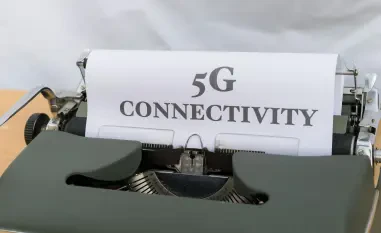In an era where industrial manufacturing races toward unprecedented efficiency, Samsung has emerged as a frontrunner with its groundbreaking digital twins technology, which mirrors every machine, process, and potential glitch in a virtual realm. Picture a sprawling semiconductor factory where engineers can troubleshoot issues before they even occur, transforming science fiction into reality through Samsung’s innovative approach to smart manufacturing. By leveraging digital twins, the company is redefining operational precision in complex sectors like semiconductor and mobile device production. This review delves into the intricacies of this transformative technology, exploring its core features, real-world impact, and the challenges it faces in a competitive landscape.
Core Features and Capabilities
Virtual Factory Replication with NVIDIA Omniverse
Samsung’s digital twins technology hinges on NVIDIA’s Omniverse platform, a sophisticated toolset that creates detailed virtual models of factory operations. These digital replicas simulate entire production environments, enabling the identification of inefficiencies or potential failures without interrupting physical workflows. Such a setup proves invaluable in high-stakes industries where even minor downtime can cost millions.
The ability to test process improvements in a risk-free virtual space stands out as a key advantage. Engineers can experiment with new configurations, predict outcomes, and refine operations before implementing changes on the factory floor. This not only boosts productivity but also minimizes costly errors in sectors like semiconductor manufacturing, where precision is paramount.
AI-Enhanced Computational Lithography
A standout feature of Samsung’s digital twins is the integration of AI-driven computational lithography, powered by NVIDIA’s cuLitho and CUDA-X libraries. This technology accelerates optical proximity correction (OPC), a critical process for wafer patterning, by a remarkable 20 times compared to traditional methods. The result is shorter development cycles and heightened accuracy in chip production.
AI plays a pivotal role in predictive corrections, analyzing vast datasets to anticipate and address manufacturing discrepancies before they manifest. This precision directly impacts the quality of semiconductors, ensuring that Samsung remains competitive in a market driven by innovation and speed. The synergy of AI and digital twins marks a significant leap in manufacturing intelligence.
Innovations in Smart Manufacturing
The Rise of the AI-Powered Megafactory
Samsung’s commitment to smart manufacturing is epitomized by the launch of its ‘Megafactory,’ a state-of-the-art facility driven by AI and robotics. Unlike earlier, limited AI trials, this initiative represents a full-scale shift to intelligent production environments. The Megafactory integrates digital twins with over 50,000 NVIDIA GPUs to create a unified network for real-time analysis and optimization.
This ambitious project targets complex production areas, including mobile devices and robotics, aiming to streamline operations on an unprecedented scale. By consolidating virtual simulations with physical automation, Samsung is setting a new standard for what a factory can achieve in terms of efficiency and adaptability.
Long-Standing Collaboration with NVIDIA
Underpinning these advancements is Samsung’s 25-year partnership with NVIDIA, a collaboration that continues to drive hardware-centric innovation. From the development of high-performance HBM4 memory to cutting-edge robotics platforms like Jetson Thor, this alliance ensures that Samsung’s digital twins are supported by top-tier computational power.
A notable trend is the move toward end-to-end AI systems, unifying hardware, proprietary models, and edge networking into a seamless data flow. This holistic approach not only enhances factory operations but also positions Samsung as a leader in the broader industry shift toward predictive, intelligent manufacturing.
Real-World Impact and Applications
Transforming Semiconductor and Mobile Production
Samsung’s digital twins have found practical application across diverse manufacturing domains, particularly in semiconductor and mobile device production. Virtual optimization of production lines allows for the fine-tuning of workflows, ensuring that bottlenecks are addressed before they disrupt output. This capability is critical in industries where timing and precision dictate market success.
Predictive maintenance, another key application, uses digital twins to monitor equipment health and foresee potential failures. By reducing unexpected downtime, Samsung maintains a competitive edge, delivering products faster and more reliably to global markets. These use cases highlight the tangible benefits of virtual simulation in real-world settings.
Extending AI to Network Infrastructure
Beyond factory floors, Samsung is applying AI-driven systems to network infrastructure through AI-RAN, developed in collaboration with Korean telecom operators. This next-generation communication technology integrates AI computing into mobile networks, enabling real-time data processing at the edge. Such innovation supports industrial equipment, robotics, and even drones with unparalleled connectivity.
The implications of AI-RAN extend to enhancing automation and safety in smart manufacturing. By facilitating instantaneous decision-making, Samsung is laying the groundwork for broader adoption of physical AI applications, demonstrating the versatility of its digital twins ecosystem.
Challenges in Widespread Adoption
Technical and Scalability Hurdles
Despite its promise, scaling digital twins technology across varied manufacturing environments presents significant technical challenges. Each facility has unique operational needs, making universal implementation a complex endeavor. Integration with existing systems often requires substantial customization, posing a barrier to rapid deployment.
Additionally, the high initial costs of adopting such advanced technology can deter smaller players or facilities with constrained budgets. Samsung is actively addressing these issues through strategic partnerships and incremental advancements in AI and hardware, but the path to widespread adoption remains intricate.
Data Security and Operational Risks
Data security emerges as another critical concern, given the vast amounts of sensitive information processed by digital twins. Protecting these virtual models from cyber threats is paramount to maintaining trust and operational integrity. Breaches could compromise proprietary processes or disrupt production, underscoring the need for robust safeguards.
Efforts to mitigate these risks include enhanced encryption and secure data handling protocols. However, as the technology evolves, so too must the defenses against emerging threats, requiring continuous investment and vigilance from Samsung and its collaborators.
Future Prospects and Industry Influence
Scaling Across Global Manufacturing Hubs
Looking ahead, Samsung aims to scale its digital twins technology across global manufacturing hubs, bringing greater intelligence to its worldwide operations. The focus is on creating flexible, adaptive systems that can accommodate diverse production demands. This scalability could redefine how factories operate on a global level.
Anticipated breakthroughs in AI integration and edge networking are expected to further enhance the capabilities of digital twins. As these technologies mature, they promise to deliver even more precise simulations and real-time optimizations, solidifying Samsung’s position at the forefront of smart manufacturing.
Setting New Benchmarks for Smart Factories
The long-term impact of Samsung’s digital twins technology on the manufacturing industry cannot be overstated. By pioneering a blend of virtual simulation, AI, and robotics, the company is establishing benchmarks for what constitutes a smart factory. Competitors will likely follow suit, driving innovation across the sector.
This trajectory suggests a future where predictive, intelligent systems become the norm rather than the exception. Samsung’s role in shaping this landscape will likely influence industry standards, pushing the boundaries of efficiency and technological integration for years to come.
Final Thoughts and Next Steps
Reflecting on Samsung’s journey with digital twins technology, it is clear that the company has achieved remarkable strides in operational efficiency and manufacturing precision. The seamless blend of virtual replication and AI-driven insights has transformed complex production environments, setting a high bar for competitors. Each advancement, from the Megafactory to AI-RAN, underscores a commitment to innovation that reshapes industrial norms.
Moving forward, the focus should shift to addressing scalability and security challenges through collaborative efforts and cutting-edge solutions. Industry stakeholders must prioritize accessible frameworks that lower adoption barriers, ensuring smaller manufacturers can benefit from digital twins. Additionally, investing in robust cybersecurity measures will be crucial to safeguard this technology’s future. Samsung’s path offers a blueprint, but the collective push toward smarter, safer manufacturing ecosystems will define the next chapter of industrial evolution.













